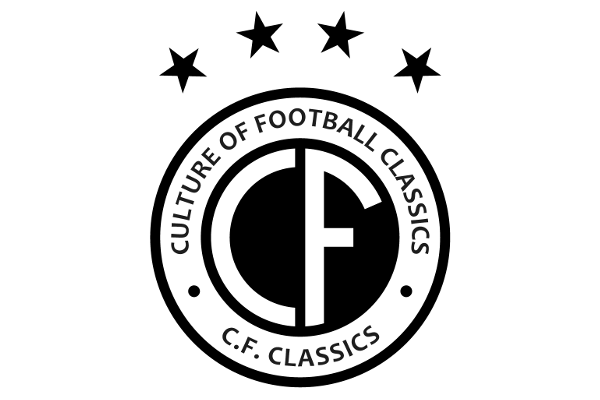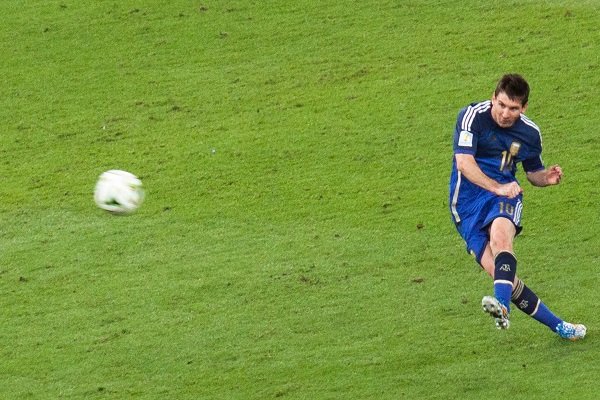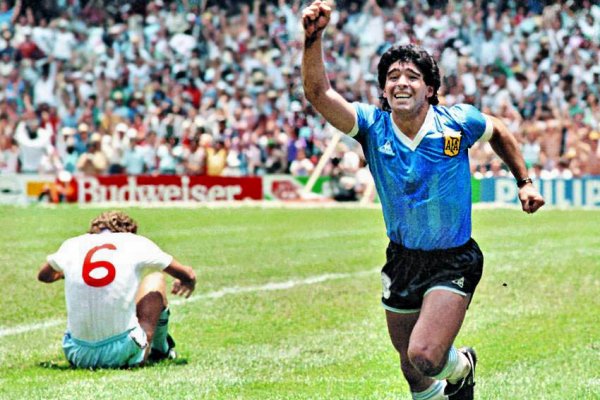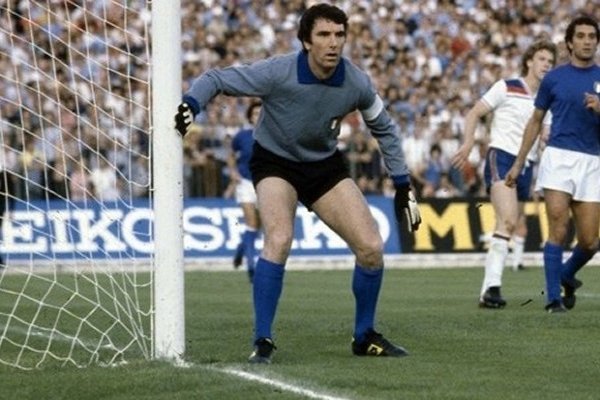Classic Football Partnership Nicknames
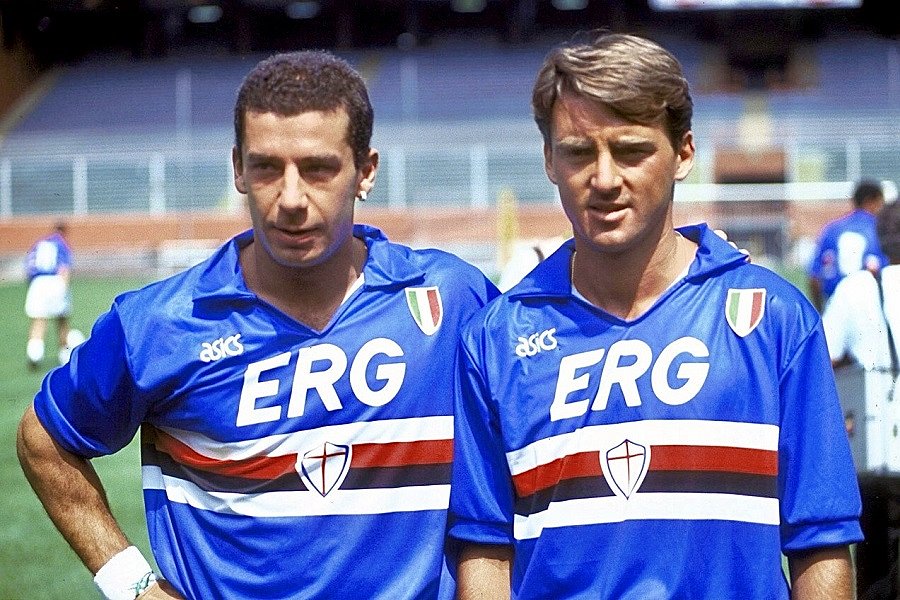
I Gemelli del Gol - Roberto Mancini and Gianluca Vialli.
Photo: Wikimedia Commons.
You may have already read our list of classic football strike partnerships. And yes, admittedly those boys have banged in some goals. That's all well and good, but how many of those football partnerships can claim to have a top-notch nickname assigned to them?
Well, these ten football partnerships can...
No.1 "Le Carré Magique" (The Magic Square). France 1984-1986.
Luis Fernández, Alain Giresse, Jean Tigana, Michel Platini.
Where else can we start but with one of the greatest four-man midfield partnerships that the game has seen.
The nickname came from the shape of their formation, and err... because they were magic.
The under-rated Luis Fernandez doing the donkey work at the bottom of the square, the class and energy of Giresse and Jean Tigana to the sides, then the genius of Platini at the top.
A brilliant combination. If they'd had a really top class striker in front of them then they may have added the 1986 World Cup to the Euro 84 title that they won so impressively on home soil. In that particular tournament, two of the players from the Carré Magique, Platini and Tigana, were also responsible for one of the classic football commentaries of the 1980s, as John Motson nearly explodes with excitement in the epic semi-final against Portugal!
They seemed to be around as a partnership for a lot longer than two and a half years, but the reality is that they first played together in a friendly against Bobby Robson's England at the start of 1984, and their final match together was that World Cup semi-final defeat to West Germany in 1986, after which Giresse didn't play again for Les Bleues.
No.2 "La Magica" (MA-GI-CA). Napoli 1987-1988.
Diego Maradona, Bruno Giordano, Careca.
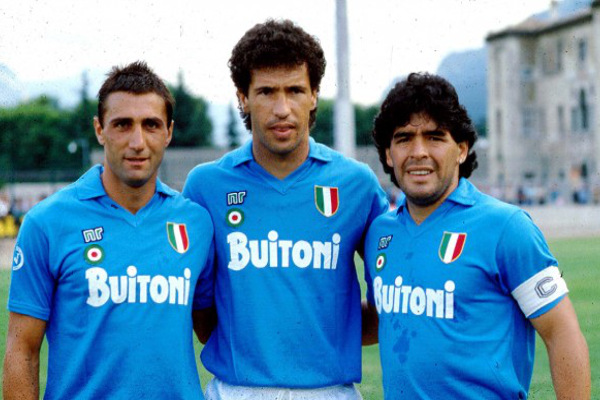
The nickname obviously derived from the first two letters of each player's surname, la Magica was one of Serie A's most prolific attacking trios, with strikers Giordano and Careca backed up by the playmaking skills of Diego Maradona just tucked in behind them.
Unfortunately they only had Napoli's 1987-88 season together, but all three players made it into the Serie A top 10 scoring charts, Maradona claiming the Capocannoniere award title with 15 goals, Careca second with 13 and Giordano weighing in with a respectable 8 goals.
Unfortunately, despite being by far the most offensive team of the season, Napoli and la Magica just failed to defend their first Serie A title, narrowly missing out to Milan.
No.3 "Los Carasucias" (Angels with Dirty Faces) Argentina 1956-57.
Omar Sívori, Humberto Maschio, Antonio Angelillo, Omar Corbatta, Osvaldo Cruz.
"Los Carasucias" was the nickname given to the wonderfully talented Argentinian forward line of 1956 and 1957 that would go on to help the country win the 1957 South American Championship. The name translated as "Angels with Dirty Faces" and was a reference to the 1930s James Cagney/Humphrey Bogart gangster movie of the same name. Apparently the appearance of the players made them look like a bunch of tearaway lads taken off the mean streets of Buenos Aires, but who would set the game alight with their attacking flair and skill on the pitch.
This fantastic forward line consisted of Omar Corbatta, Osvaldo Cruz, Omar Sívori, Humberto Maschio and Antonio Angelillo. There's some dispute as to whether or not the term related to the entire quintet, or whether it was just reserved for the more celebrated latter three players; Sívori, Maschio and Angelillo, but we like to give the recognition to the whole group of them.
Sívori, Maschio and Angelillo would go on to earn another nickname, "The Trio of Death", following their transfers to Italy after the 1957 triumph, even though they would all move to separate Italian clubs.
No.4 "La Quinta del Buitre" (The Vulture's Cohort). Real Madrid 1984-1987.
Emilio Butragueño, 'Manolo' Sanchís, Rafael Martín Vázquez, Míchel, Miguel Pardeza.
A great nickname which was created by Spanish journalist Julio César Iglesias (no, not that one!) to describe the five homegrown Real Madrid players who emerged from their youth academy La Fábrica in the early 1980s.
With 'Manolo' Sanchís at the back, Martín Vázquez and Míchel in midfield, and Butragueño and Pardeza up front, La Quinta del Buitre provided the core of the team that would dominate Spanish football for the majority of the decade.
Butragueño was nicknamed El Buitre (the Vulture), and as the most prominent player in the group (as well as having the most fitting nickname) the group was named after him.
The group in its entirety would actually only be together in the first team from 1984-87 because Miguel Pardeza would leave for Zaragoza at that point. However, the other four players would stay together until Martín Vázquez left for Torino in 1990 following the arrival of Gheorghe Hagi at the Bernabéu.
Whilst Butragueño and Míchel would spend the majority of their career with Real Madrid, 'Manolo' Sanchís was the only member of La Quinta del Buitre who was a one-club-man, playing over 700 games for Los Blancos during his 18 years as a professional there.
No.5 "Le Trio Magico" (The Magic Trio). Juventus 1957-61.
John Charles, Giampiero Boniperti, Omar Sívori.
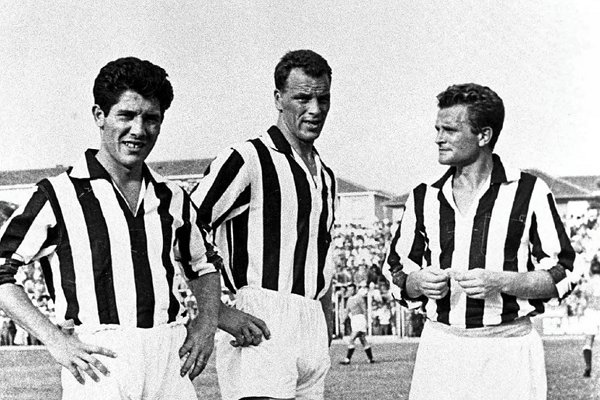
Two great traditional goal-scoring strikers in Giampiero Boniperti and John Charles, along with the creative brilliance of Omar Sívori, made this trio a match made in football heaven.
Club legend Boniperti had played for the Old Lady since 1946, whilst Welshman Charles and Argentine/Italian Sívori joined in 1957 from Leeds United and River Plate respectively. The attacking trident played together until Boniperti retired in 1961, winning three Serie A titles out of four during their time together.
No.6 "The Holy Trinity". Everton 1967-71.
Colin Harvey, Howard Kendall, Alan Ball.
Colin Harvey had been an apprentice at Goodison Park since 1960 and his elegance on the ball in midfield was starting to get some rave reviews (Everton fans nicknaming him "the White Pelé"), so when manager Harry Catterick added two more midfielders in the 1966-67 season, he created one of the finest midfield combinations in English football. Alan Ball's World Cup final heroics had shot him to prominence and led to his move from Blackpool for a record fee of £110,000, whilst Howard Kendall was signed 7 months later from Preston North End.
As with all great partnerships they completely complimented each other. Kendall was a fantastic ball winner, the timing of his tackles second to none. Ball was like a whirlwind, his energy relentless and he also had a terrific goalscoring rate for a midfielder, scoring 18, 20 and 18 goals in his first three seasons. These, combined with the skill and finesse of Harvey, made for a genuinely great midfield trio which would have its high point in the 1969-70 season, as Everton romped away with the First Division title.
The ‘Holy Trinity' broke up at the end of 1971 when Arsenal paid a record £220,000 to take Ball to Highbury, whilst Harvey and Kendall stayed on until 1974 before leaving for Sheffield Wednesday and Birmingham City respectively.
But the story didn't end there for two of the members - Kendall and Harvey were reunited in the 1980s to form the most successful managerial team in Everton's history. With Kendall at the helm and Harvey by his side, Everton won two league titles in 1984 and 1987, were FA Cup winners in 1984, and lifted the club's first European trophy in 1985 when they won the UEFA Cup Winners Cup.
No.7 "Grenoli" (GRE-NO-LI). Sweden and Milan 1949-53.
Gunnar Gren, Gunnar Nordahl, Nils Liedholm.
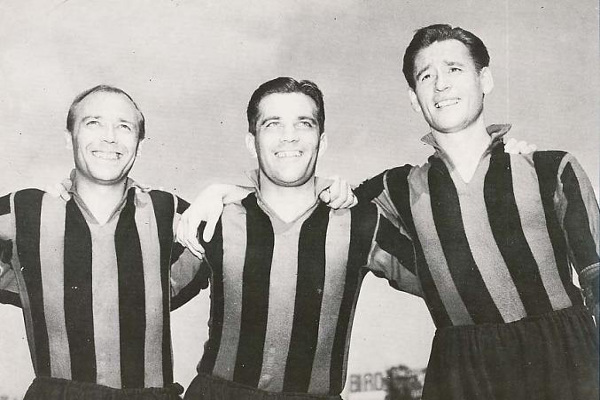
Another nickname taking its name from the first few letters of each player's surname, the Gre-No-Li attacking trio of Gunnar Gren, Gunnar Nordahl and Nils Liedholm remains one of Milan and Sweden's finest attacking partnerships.
The combination of Nils Liedholm's incredible passing (legend has it that it took two years for him to misplace a pass at the San Siro!), Gunnar Gren's playmaking skills and intelligence, and the unstoppable goalscoring machinery of Gunnar Nordahl's right foot, made this a tremendous trio for four years at Milan.
No.8 "The United Trinity". Manchester United 1964-73.
George Best, Denis Law, Bobby Charlton.
Manchester United's 4:1 victory against West Bromwich Albion on the 18th of January 1964 would mark the start of one of football's greatest triumvirates, the United Trinity of George Best, Denis Law and Bobby Charlton (sometimes also referred to as "the Holy Trinity").
Whilst all three players were fantastic individual footballers (incredibly, all three would go on to win the Ballon d'Or - Law in 1964, Charlton in 1966 and finally Best in 1968) they also combined to make a fearsome attacking partnership that would wreak havoc amongst defences across England and Europe.
Attacking midfielder Charlton had an incredible scoring-rate for a midfielder and was capable of scoring from anywhere, Best was one of the finest wingers the game had ever seen, a magician with the ball at his feet and the best dribbler around, whilst up front Law's movement and finishing could see him create something out of nothing in and around the penalty box. And yet whilst all three boasted fantastic goalscoring rates, all could be unselfish with a phenomenal number of assists and terrific link up play.
No.9 "Magisches Dreieck" (Magic Triangle). VfB Stuttgart 1995-1997.
Giovane Élber, Krasimir Balakov, Fredi Bobic.
Another football partnership nickname taken from the shape they played in, VfB Stuttgart's Magic Triangle (in German, Magisches Dreieck) was one of the Bundesliga's most exciting partnerships of the 1990s.
Brazilian striker Élber only had three seasons banging the goals in at VfB Stuttgart, but two of those were up front with strike partner Bobic, and the triangle was completed with Bulgarian attacking midfielder Balakov, probing away fantastically behind them to provide them with the goalscoring chances.
No.10 "I Gemelli del Gol" (the Goal Twins). Sampdoria 1984-92.
Gianluca Vialli, Roberto Mancini
Not just a great nickname, but a genuinely great partnership. Vialli and Mancini helped turn Sampdoria into Italian League champions and European UEFA Cup Winners Cup winners. as well as coming agonisingly close to becoming European Cup winners.
No.11 "S.A.S." Blackburn Rovers 1994-96.
Alan Shearer, Chris Sutton.
Taking their nickname from the special forces unit, Shearer and Sutton formed one of the most prolific strike partnerships in 1990s British football.
Alan Shearer had been banging the goals in for Blackburn Rovers at an incredible rate since he'd signed from Southamption in 1992. Rovers were the upcoming force in the Premiership and with Shearer's goals they finished fourth in 1992-93 and second in 1993-94. The arrival of Chris Sutton from Norwich City in July 1994 was the final piece of their jigsaw in their bid to become Premier League winners.
Blackburn Rovers pipped defending champions Manchester United to the title by one point, and it was largely down to the phenomenal SAS partnership. Shearer topped the goalscoring charts with 34 goals, Sutton was 10th with 15. But it wasn't just the goals, Shearer had the 3rd highest number of assists, many of them for Sutton, and vice-versa Sutton had the 8th highest, many of them returning the favour for Shearer.
Despite more goals in the following season they failed to retain their title, and the partnership was broken up after Euro'96 when Newcastle United signed Shearer for a world record transfer fee. However, despite only two seasons together, the SAS remains one of the Premier League's finest partnerships.
Tweet
